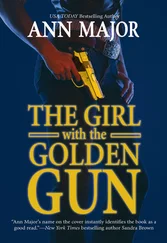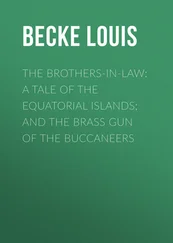And soon she does. Nicholas sits facing the camera, a big, endearing smile on his face. He is wearing a white polo shirt, a black jacket, and light pants. He is small boned, lean, well groomed, his hair trimmed close. In this image, in the bright sun that floods the classroom, he is just a boy. Nothing in the smile suggests the stress and anger he is supposed to have felt—although by the time this videotape was made, he had already acquired his gun. The smile is one of brilliant delight.
Nicholas did not hate Karen Farley. It is doubtful anyone could have. She spoke in a soft, measured way, with a Tidewater pace and cadence. She was devoted to the school. The morning of December 16, 1988, she returned a check the school had given her as payment for the extra time she had put into helping produce the school yearbook. She told Rev. Mr. Sweet the school needed the money more than she.
She had begun her teaching career in 1970 at Booker T. Washington High School, an all-black school then on the verge of being integrated. The school had decided to integrate the faculty first, then the student body. She stayed for three years until the strains and dangers of teaching there and of trying to motivate a group of disinterested city kids wore her down. She resigned to become a first-grade teacher at the Faith Christian School, operated by Faith Baptist Church in Chesapeake. She left after one semester to have her first baby, Lora. A boy, Will, followed.
Mrs. Farley stayed home with her children until 1978, when she returned to Faith. She continued teaching there until the school closed in 1987, at which point she joined the teaching staff at Atlantic Shores. A colleague from the Faith Christian School, Bonnie Lovelace, recalled a night when she and Mrs. Farley found themselves still at work long after everyone else had gone home.
“Do you think anyone knows we’re here?” Mrs. Farley asked.
Probably not, her friend answered.
“Oh, well,” Mrs. Farley said. “Someday we’ll make headlines.”
CHAPTER THREE
THE LETHAL LANDSCAPE
BEFORE ADVANCING ANY FURTHER, I SHOULD first make my bias clear, for bias more than any other force shapes debate about guns in this country. I am not opposed to guns, not even handguns, provided the owners acknowledge the monumental responsibility conferred by ownership; provided too that they invest the time necessary to become safe, proficient users and to store those guns in a cabinet strong enough to hold burglars and toddlers at bay. When I see rural road signs perforated with large-diameter bullet holes, I realize responsibility is not something universally practiced by America’s gun owners. I now ask the parents of my daughter’s playmates if they own guns and, if so, how they store them. If they store them loaded, even in a locked cabinet, my children do not play at their homes. Period.
I can appreciate the lethal appeal of weapons and the fine craftsmanship evident in such premium handguns as the Colt Python and, yes, the Smith & Wesson Model 29 used by Dirty Harry. When I go to gun shows, as I do now in my capacity as a federally licensed firearms dealer, I am drawn, as are most of the rest of the browsers around me, to pick up the guns spread so invitingly across the exhibitors’ tables, especially the notorious weapons, the fully automatic AK-47s and MAC-11s, the Sten guns and pistol-grip Mossbergs. As a creature of the James Bond era, I am particularly fascinated by the silencers, which can be acquired by anyone with a clean record willing to pay the $200 federal transfer tax covering such devices. At gun shows, the urge to touch is strong and has caused many dealers to spread a soft black mesh over the guns on their tables. I confess to at least thinking the words “Make my day” or “Hasta la vista, baby” on my rounds, although I do not own any guns and, as a parent of two resourceful children age five and three, have no plans to buy any. I am content to let hunters hunt and can certainly appreciate the fun of getting out into the wilderness on a crisp autumn day in the company of one’s friends, although I confess the charm of “blooding,” or dumping a pail of deer viscera over the head of a novice hunter on the occasion of his very first kill, still eludes me.
Where I run afoul of the tenets of the National Rifle Association is in my belief that people should be allowed to acquire guns only after going through a licensing process at least as rigorous as getting a driver’s license. As things stand now, a blind man can buy a gun. I hasten to add here that I mean no offense to the sightless. It just seems to me that anyone who buys a firearm ought first to be asked to prove he or she can see well enough to distinguish between a burglar and the paperboy. When I first mentioned this notion in print, I took it to be an unassailable position. I soon heard from two irate souls who accused me of stereotyping the blind. One of my critics wrote: “I know several blind persons (men and women) who have guns—for all the reasons anyone else might own them. These people represent the same cross section of sensitivity to the issue… and they demonstrate behavior as responsible as that of anyone else.” The author accused me of believing “that blindness should be prima facie disqualification for owning a gun.” Such a belief, he wrote, was “totally unsupportable on any basis other than unreasonable discrimination.”
Nonetheless, I stand my ground.
Where I further risk abrading the prickly sensibilities of the gun camp is in my belief that a federal firearms dealer’s license of the kind I now possess should be the hardest, most expensive professional license to acquire in America, instead of one of the easiest and cheapest. I cross the friend-foe line too in my belief that America is currently in the midst of a gun crisis that can no longer be considered just a manifestation of that good old frontier spirit but instead has become a costly global embarrassment.
That a handgun crisis does exist should be well beyond dispute by now, given the bleak slag heap of statistics on gunshot death and injury now casting its shadow over our society. These statistics could kindle outrage in a stone but have failed, somehow, to shake any tears from America’s gun industry and the gun culture that supports it.
Over the last two years firearms killed almost 70,000 Americans, more than the total of U.S. soldiers killed in the entire Vietnam War. Every year handguns alone account for 22,000 deaths. In Los Angeles County, 8,050 people were killed or wounded in 1991, according to a report in The Los Angeles Times —thirteen times the number of U.S. forces killed in the Persian Gulf war. Every day, the handguns of America kill sixty-four people: twenty-five of the dead are victims of homicide; most of the rest shoot themselves. Handguns are used to terrorize countless others: over the next twenty-four hours, handgun-wielding assailants will rape 33 women, rob 575 people, and assault another 1,116.
A relatively new phenomenon, originating in the mid-1980s, is the inclusion of young children on the list of urban gunshot homicides. In 1987 a team of researchers from the UCLA Medical Center and King/Drew Medical Center in Los Angeles found that until 1980, King/Drew hadn’t admitted a single child for gunshot wounds. From 1980 to 1987 the center admitted thirty-four. The study, published in the American Journal of Diseases of Children , included a macabre one-page table that listed the children’s injuries, the relationship of the shooter to the victim, and other data that sketched the true horror of gunshot wounds, a horror ordinarily spared us by reporters pressed for time and news space who concentrate on the dead and dismiss any other victims as simply being wounded. The children, ranging in age from one to nine, were shot in the head, neck, chest, leg, and rectum. A five-year-old lost a hand. A three-year-old, shot in the rectum, endured a colostomy. Other children on the list lost fingers, eyes, and brain tissue, with at least one—an eight-year-old girl—consigned to an institution most likely for the rest of her life. They were shot by grandfathers, robbers, cousins, snipers, friends, and in a particularly cruel twist, by gang members seeking to exact revenge on an elder sibling by killing a younger brother or sister.
Читать дальше


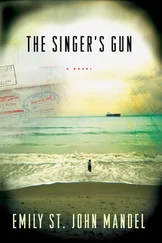

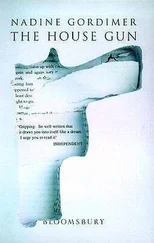

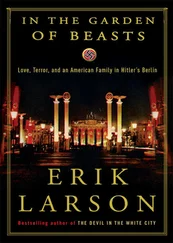

![Ричард Деминг - Whistle Past the Graveyard [= Give the Girl a Gun]](/books/412176/richard-deming-whistle-past-the-graveyard-give-t-thumb.webp)
